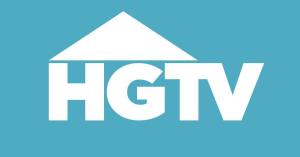Despite some economic impact payments being dished out, many Americans are still wondering when their payout will arrive. An estimated 140 million households are expected to receive coronavirus stimulus checks, and plenty of those housholds’ bank accounts are dwindling without it. As the Washington Post reports, the first wave of payouts is in progress, targeting roughly 80 million Americans. Those payments are being sent to Americans with direct deposit information on file with the Internal Revenue Service (IRS), A second wave of payments will include paper checks sent via mail.
Per The Motley Fool, all single filers are expected to receive their stimulus money by the end of June. (This does not include those who do not have their tax information on file with the IRS.) All head-of-household filers will have received their paper stimulus payouts by July 24 at the latest. One of the latest payouts could be to married couples filing jointly with higher income levels. Those payouts might come as late as early September.
Videos by PopCulture.com
With an estimated 60 million Americans set to receive their stimulus money in the form of a paper check, the IRS will begin issuing checks on a weekly basis based on income level. Those with the lowest adjusted gross income (AGI) will be among the first to receive their stimulus check, with the IRS expected to mail 5 million checks per week.
The current mailing schedule for paper checks is as follows:
- the week ending April 24 for those with up to $10,000 in AGI
- the week ending May 1 for people between $10,000 AGI and $20,000 AGI
- the week ending May 8 for people between 20,000 AGI and $30,000
- the week ending May 15 for people between $40,000 AGI and $50,000 AGI
- the week ending May 29 for those with an AGI between $60,000 and $70,000
- the week ending June 12 for people with an AGI between $80,000 and $90,000
- the week ending June 26 for people with an AGI between $100,000 and $110,000
- the week ending July 10 for people with an AGI between $120,000 and $130,000
- the week ending July 24 for people with an AGI between $140,000 and $150,000
- the week ending Aug. 7 for those with an AGI between $150,000 and $160,000
- the week ending Aug. 14 for those with an AGI between $160,000 and $170,000
- the week ending Aug. 21 for those with an AGI between $170,000 and $180,000
- the week ending Aug. 28 for those with an AGI between $180,000 and $190,000
- the week ending Sept. 4 for those with an AGI between $190,000 and $198,000
- the week ending Sept. 11 for all other checks for those people who do not have tax information on file with the IRS.
For those who do not typically file a tax return and therefore do not have their information on file with the IRS, the non-filers tool available on the IRS website will allow them to “easily and quickly” provide the IRS the necessary information for no fee. Meanwhile, the “Get My Payment” tool, also available on the IRS website, allows people to track the status of their payment.









